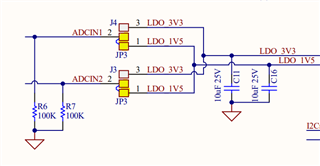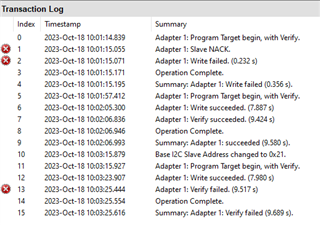Other Parts Discussed in Thread: TPS25750
Project – Develop a USB-C PD to supply 5V 3A using USB-IF certified components.
1. I have the TI USB-PD-CHG-EVM-01 integrated Type-C PD Evaluation Module and have been able to program it with the Aardvark I2C programmer to deliver the 5V to the USB-C connector.
2. I have not been able to program the TPS25750 device on my Test Fixture. There isn’t an Ack on the I2CS signal. There is supplied 3.3V and 5V and resulting LEO_3.3 and LDO_1.5
3. To verify the Aardvark I2C interface, I am able to program the EEPROM directly, but the TPS25750 doesn’t react.
Can you suggest any design changes or steps to get the TPS25750 to operate?
Thanks for your help.USBC Test Fixture.pdf





